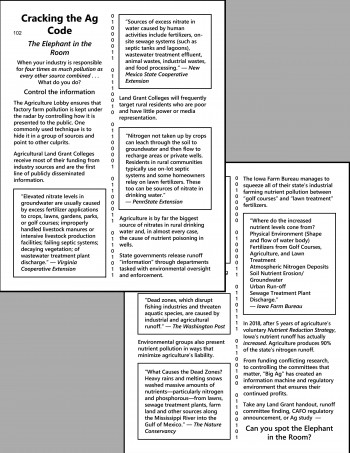-
Author Insight
Cracking the Ag Code
When there is no avoiding the issue, industrial agriculture hides its guilt by camouflaging it — with a little help from their friends. This piece shows one way agribusinesses [that are responsible for more than four times the nutrient pollution as every other source combined] are being reduced to just another source in a list by people that the public trusts to inform. The Iowa Farm Bureau answers their own question: “Where do the increased nutrient levels come from?” by squeezing Agriculture in between Fertilizers from Golf Courses and Lawn Treatment. In light of this answer, it may be ironic [or informative] to learn that Agriculture produces 90% of the state’s nutrient runoff, and that in 2018, after 5 years of voluntary agricultural programs, their runoff had actually increased.


Book Excerpt
Family Farm Fun



Click Follow to receive emails when this author adds content on Bublish


Comment on this Bubble
Your comment and a link to this bubble will also appear in your Facebook feed.